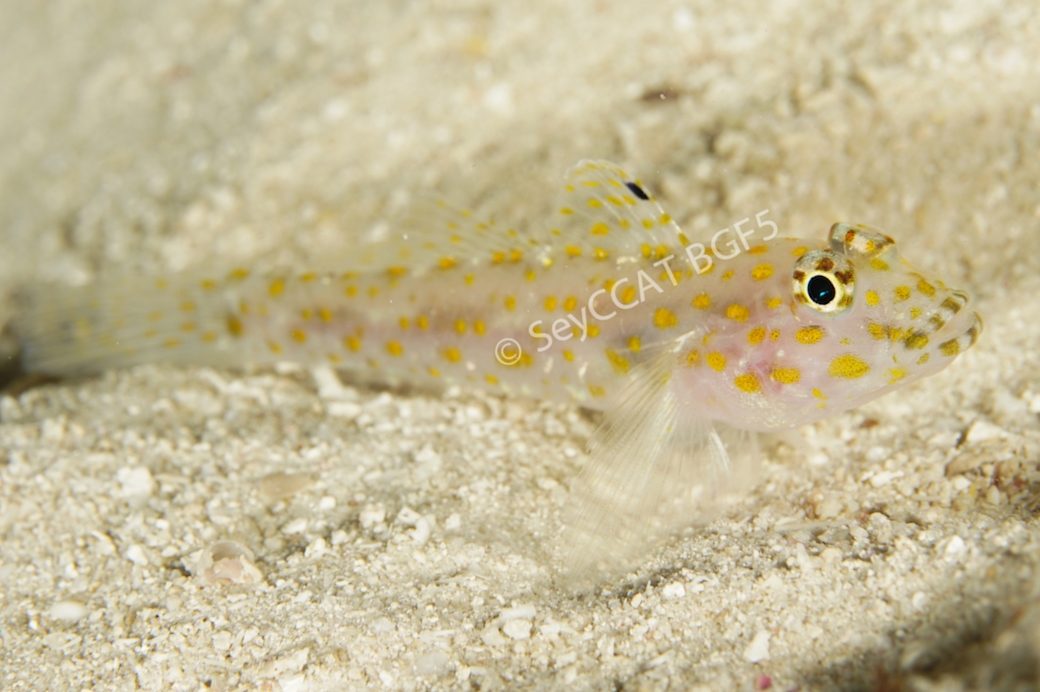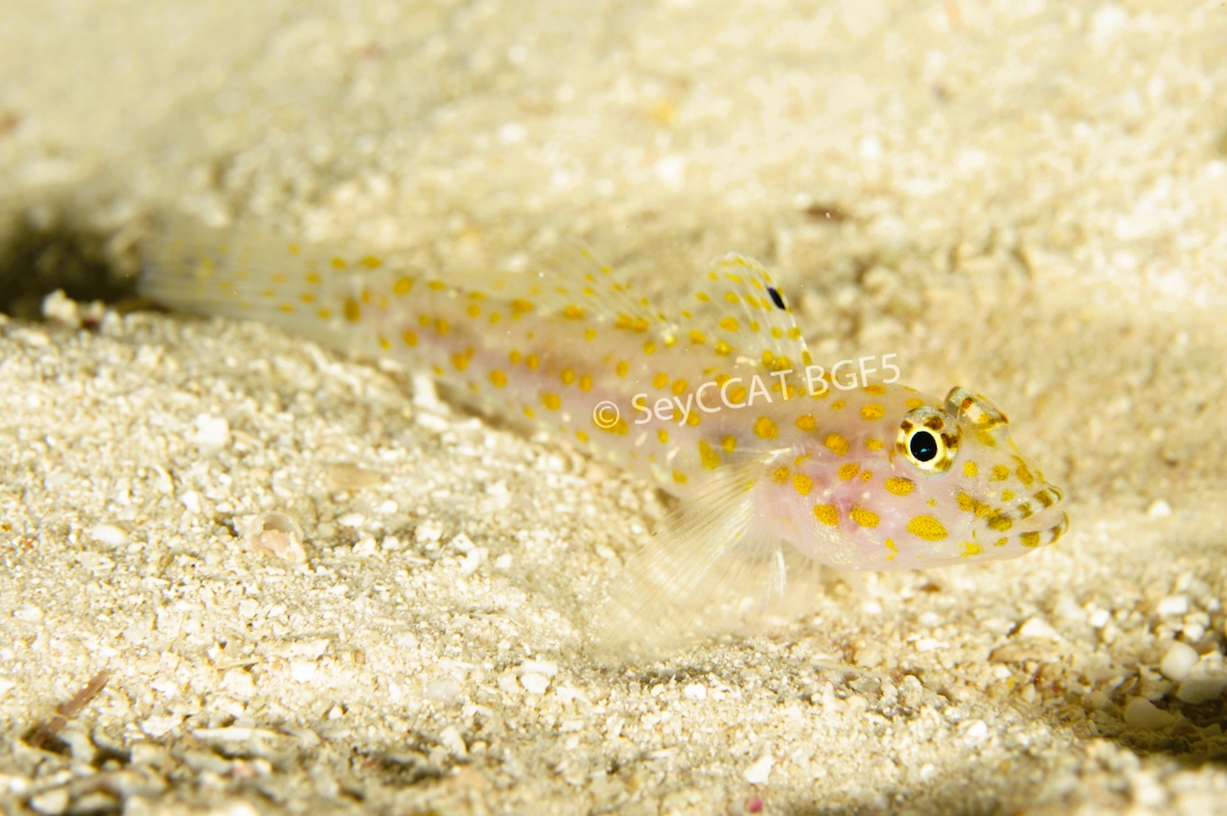Description:
Dorsal spines: 6-7; Dorsal rays: 9; Anal spines: 1; Anal rays: 8.
Small goby, body moderately elongate and compressed. Ventral part of head and chest broad and nearly flat. Head triangular when viewed from above.
Eye protrudes slightly above dorsal profile of head. Interorbital space very narrow. Mouth terminal or with lower jaw slightly projecting, and moderately
large, the maxilla reaching to below anterior 1/2 of eye. Upper jaw with an outer row of slender, well-spaced, incurved conical teeth that progressively
shorten posteriorly. Front of upper jaw with a middle band of villiform teeth in 2-3 irregular rows, followed by a row of longer, slender, conical teeth
that are inward-projecting and depressible, this row also progressively smaller posteriorly, ending about halfway back in jaw. Front of lower jaw with an
outer row of 9 (6-9) slender, well-spaced, incurved, conical teeth on each side, nearly as large as teeth at front of upper jaw. Band of villiform teeth
in 3-4 rows anteriorly in lower jaw behind outer larger teeth, and an inner row of longer, inwardly depressible teeth that progressively shorten posteriorly.
No teeth on palate. Tongue broadly rounded. Head naked except for scales on side of nape that extend forward to above upper end of preopercular margin.
Anterior nostril a short membranous tube with a pointed posterior flap at level of lower edge of eye 1/2 orbit diameter in front of orbit. Posterior
nostril a prominent opening with a slight rim dorsoposterior to anterior nostril about 1/2 the distance from base of upper lip to edge of orbit. Origin
of dorsal fin above upper base of pectoral fin. 1st dorsal fin lower than 2nd dorsal fin. Pectoral fins pointed, middle rays longest. Origin of pelvic
fins below base of pectoral fins. Pelvic fins fully joined medially by membrane (though membrane often torn). Pelvic fins usually reaching or extending
slightly beyond origin of anal fin. Caudal fin strongly rounded.
Colour. Body translucent light gray with numerous, small, dusky-edged orange-yellow spots on head, body, caudal, and dorsal fins; a black spot on 1st
membrane of dorsal fin. Iris yellowish with 5 brown spots. Fins translucent whitish, the outer margin of dorsal fins narrowly white.
Size:
Maturity: Unknown. Max length : 6.5 cm SL.
Habitat and Ecology:
Inhabits sand-rubble bottoms near reefs (depth 10-48 m).
Fishery Status:
This species is not protected or subject to fishery regulations.
Notes:
Photo courtesy Eleanor Brighton and Chris Mason-Parker (c) 2022 Blue Safari Seychelles/Marine Conservation Society, Seychelles.
Photograph taken at Alphonse group 2022.
References:
Froese, R. & D. Pauly. Eds. (2023). FishBase. Fusigobius pallidus. https://fishbase.mnhn.fr/summary/Fusigobius-pallidus (28/11/23).
Greenfield, D. & Munroe, T.A. (2016). Fusigobius pallidus. The IUCN Red List 2016: https://dx.doi.org/10.2305/IUCN.UK.2016-3.RLTS.T193062A2190156.en. (28/11/23).
Randall, J.E. (2001). Five New Indo-Pacific Gobiid Fishes of the Genus Coryphopterus. Zoological Studies 40(3): 206-225 (2001).
Citation:
Nevill, J.E.G., Brighton, E. & Mason-Parker, C. (2023). Fusigobius pallidus, Pale sandgoby. Seychelles Seatizens. https://seatizens.sc/species/fusigobius-pallidus-randall-2001/



There are no comments